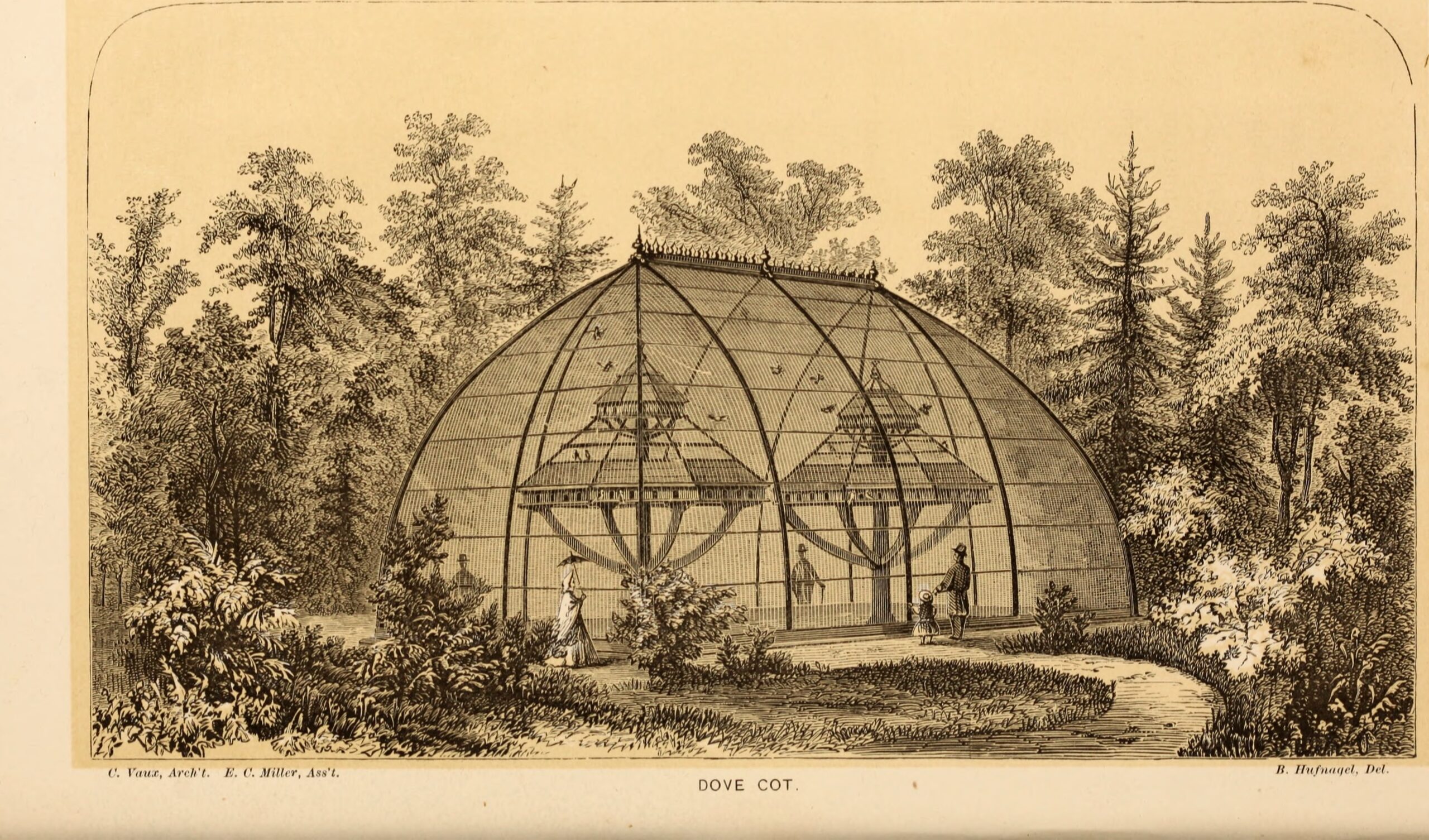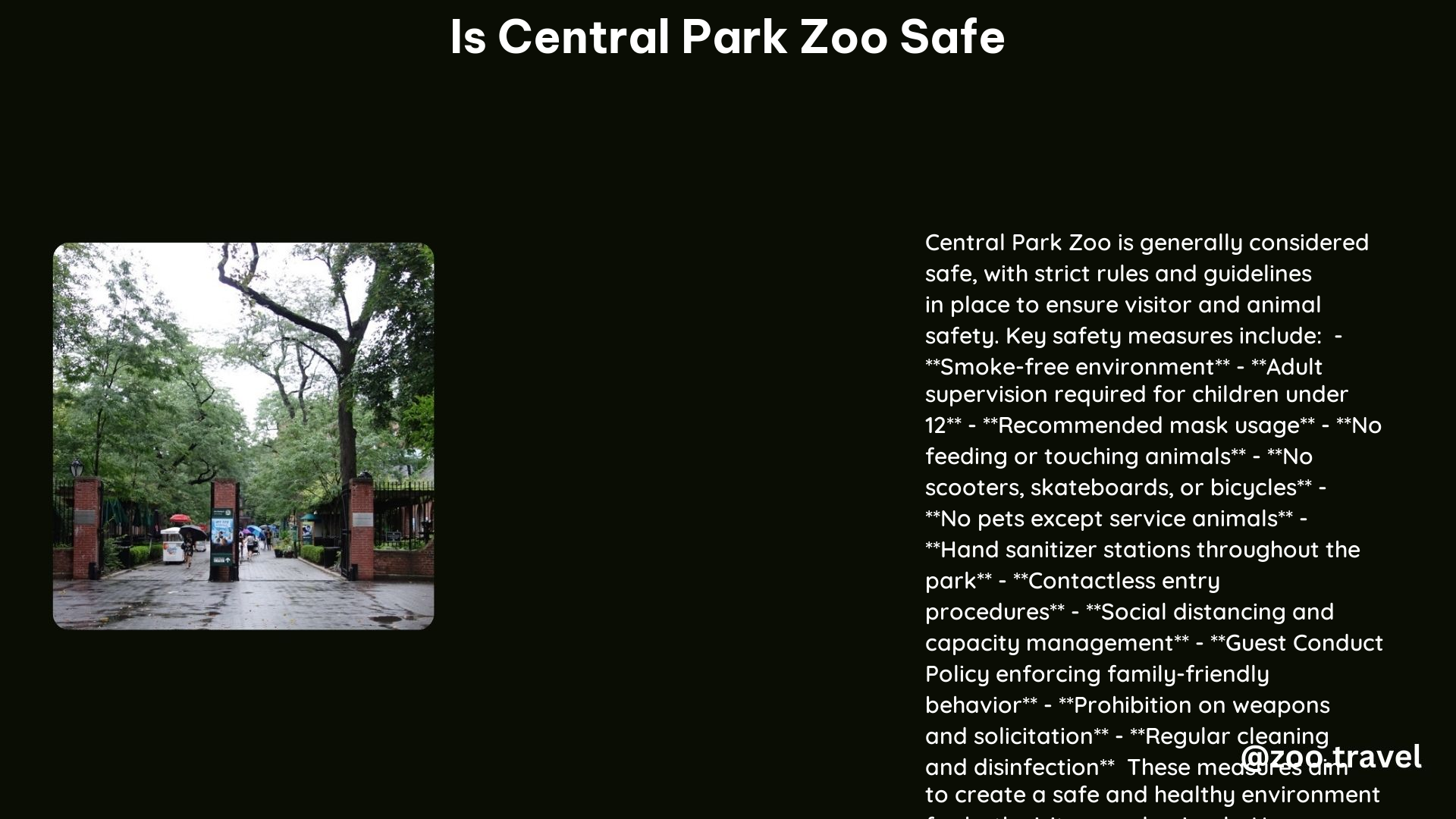The Central Park Zoo in New York City is a popular destination for visitors from around the world, offering a unique opportunity to observe a diverse array of animal species in a naturalistic setting. As a zoo enthusiast, you may be wondering: Is the Central Park Zoo a safe environment for both visitors and animals? In this comprehensive guide, we’ll explore the safety measures in place, address any concerns, and provide insights into how the zoo ensures the well-being of its animal residents.
Safety for Visitors

The Central Park Zoo is committed to providing a safe and enjoyable experience for all its visitors. Here are some of the key safety measures in place:
- Smoke-Free Environment: The zoo is a smoke-free park, ensuring a healthy and clean environment for visitors.
- Adult Supervision: Children under the age of 12 must be accompanied by an adult (18 years or older) at all times.
- No Scooters or Bicycles: For safety reasons, scooters, skateboards, and bicycles are prohibited within the zoo.
- No Pets: Only working service animals are allowed on the premises, excluding comfort animals and pets.
- No Weapons: Weapons of any kind, including firearms, are not permitted in the zoo.
- Contactless Entry: The zoo has implemented contactless entry procedures to minimize physical contact and reduce the risk of disease transmission.
- Hand Sanitizer: Hand sanitizer stations are available throughout the park to encourage good hygiene practices.
- Social Distancing: Visitors are encouraged to maintain social distancing and follow any relevant guidelines in place.
Safety for Animals

The Central Park Zoo is committed to providing a safe and comfortable environment for its animal residents. Here’s how they ensure the well-being of the animals:
- Naturalistic Environments: The zoo has replaced traditional cages with naturalistic environments, allowing the animals to thrive in a more natural setting.
- Conservation Efforts: The Wildlife Conservation Society (WCS), which manages the Central Park Zoo, is actively engaged in conservation efforts to protect endangered species and restore their populations.
- Animal Welfare: The zoo follows strict guidelines and protocols to ensure the overall well-being of its animal residents, including providing appropriate space, socialization, and care.
Safety Concerns and Restrictions
While the Central Park Zoo strives to maintain a safe and enjoyable environment, there are some important rules and restrictions in place:
- Guest Conduct Policy: The zoo has a strict policy against abusive or inappropriate behavior, including verbal or physical harassment. The zoo reserves the right to refuse admission or revoke membership for such behavior.
- No Feeding or Touching Animals: Visitors are not allowed to feed or touch the animals, and local wildlife should be respected and left untouched.
- No Commercial Photography: Commercial photography or filming requires express permission from the zoo.
Ensuring Safety and Well-Being
The Central Park Zoo takes a comprehensive approach to ensuring the safety and well-being of both visitors and animals. Here are some of the key measures in place:
- Staff and Volunteer Programs: The WCS offers educational programs and volunteer opportunities to engage the local community and promote animal welfare.
- Accreditation: The Central Park Zoo is accredited by the Association of Zoos and Aquariums (AZA), ensuring it meets high standards for animal care and welfare.
- Continuous Improvement: The zoo regularly updates its policies and procedures to ensure the safety and well-being of all who visit and reside within its grounds.
Statistics and Figures
- Annual Visitors: The Central Park Zoo attracts over one million visitors each year.
- Animal Population: The zoo is home to approximately 1,487 animals representing 163 species.
- Area: The zoo occupies a 6.5-acre plot within Central Park.
In conclusion, the Central Park Zoo is a safe and well-managed environment that prioritizes the safety and well-being of both visitors and animals. By adhering to strict safety protocols, providing naturalistic habitats, and engaging in conservation efforts, the zoo ensures a positive and enriching experience for all who visit. As a zoo touring enthusiast, you can rest assured that the Central Park Zoo is a safe and responsible destination to explore the wonders of the animal kingdom.
References
- Central Park Zoo. (n.d.). Visitor Rules. Retrieved from https://centralparkzoo.com/plan-your-visit/rules
- Central Park Zoo. (n.d.). Know Before You Go. Retrieved from https://centralparkzoo.com/plan-your-visit/know-before-you-go
- Wikipedia. (n.d.). Central Park Zoo. Retrieved from https://en.wikipedia.org/wiki/Central_Park_Zoo
- TripAdvisor. (n.d.). Review of Central Park Zoo. Retrieved from https://www.tripadvisor.com/ShowUserReviews-g60763-d267703-r23380503-Central_Park_Zoo-New_York_City_New_York.html
- Reddit. (n.d.). Lockdown has made me realize the cruelty of Central Park Zoo. Retrieved from https://www.reddit.com/r/nyc/comments/fxs8yl/lockdown_has_made_me_realize_the_cruelty_of/.
